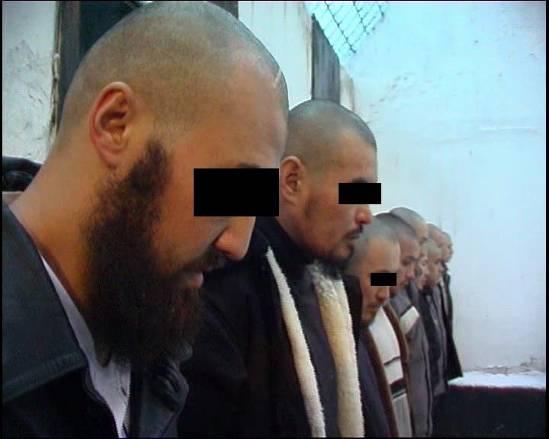
Islamic Radicalism in Kazakhstan: Myth or Reality?
Publication: Eurasia Daily Monitor Volume: 9 Issue: 125
By:

Prior to the wave of terrorist attacks in 2011, the problem of Islamic radicalism in Kazakhstan was less ubiquitous than in the other Central Asia republics. Kazakhs (who were nomads in the past) are less religious then Uzbeks and Tajiks, and the proportion of the latter ethnic groups in Kazakhstan is relatively small. For example, a much larger percentage of the Uzbek population in Kyrgyzstan partially explains the more intensive activity of Islamic radicals in this republic (see EDM June 18). Also, the percentage of Christians in Kazakhstan (about 25 percent of the population) is higher than in any other Central Asia republic.
In general, Uzbeks (2.94 percent of the Kazakhstani population) and Uyghurs (1.53 percent) are much more devout believers than the Kazakhs, and consequently, the number of Islamic radicals among them is much greater.
Whereas, the overwhelming majority of the republic’s 330,000 ethnic Uzbeks are concentrated in the Shymkent region (southern Kazakhstan), making up around 18 percent of its population.
“The underground organization Hizb ut-Tahrir, which advocates for the creation of an Islamic state in Central Asia, is more numerous in the Shymkent region than in the other parts of Kazakhstan. The Shymkent region borders Uzbekistan, and many local Uzbeks have relatives in Uzbekistan. Uzbek believers escaping President Islam Karimov’s repressions flee to the Shymkent region. Some of these believers are Islamic radicals. This fact also destabilizes the situation,” Dr. Igor Savin, the director of Shymkent think-tank “Dialog” recently told EDM.
For example, this year, the Kazakhstani police detained Hurshid Mukhtorov, a citizen of Uzbekistan, and Kazakhstan’s authorities are going to deport him to his home country. It is noteworthy that on January 21, 2012, Jamshid Mukhtorov, Hurshid’s brother, was arrested in the United States on charges of sponsoring a terrorist organization, “The Union of Islamic Jihad,” and the intention of participating in a terrorist act (ferghananews.com, January 21).
The problems of the Uzbek and Uyghur diasporas in Kazakhstan are quite similar. Uyghurs live compactly in the Uyghur and Panfilov districts of Almaty province. The Panfilov district borders on the Xinjiang Uyghur Autonomous Region (XUAR) in China, and many Chinese Uyghur-separatists hide out in Kazakhstan. From time to time, Kazakhstani special police agencies expose alleged terrorist Uyghur organizations. These groups turn out to be made up of both Kazakhstani and Chinese ethnic Uyghurs. In 2000, for example, police operatives in Almaty exposed an underground headquarters of Uyghur separatists from the XUAR. Members of the cell resisted capture and were killed in the shootout that ensued (ferghananews.com, May 4, 2006).
In December 2003, in Almaty, Kazakhstani security services uncovered a cell of the Islamic Party of Turkistan (IPT), established by Chinese citizen Aisu “Khasam” Maksum in the 1980s. The authorities found weapons, ammunition and improvised explosive devices possessed by the arrested people. This particular cell was comprised of Uyghurs from China, Kazakhstan and Turkey. Later, the investigation established that some of the Kazakhstani members of the cell had received training in the IPT camps in Afghanistan. This branch also maintained close contacts with the Islamic Movement of Uzbekistan and, through a Chechen intermediary, also had connections with the Chechen Diaspora in Turkey and with Chechen militants (ferghananews.com, May 4, 2006).
In May 2006, Kazakhstan’s National Security Ministry (NSM) announced that it had exposed a terrorist organization whose members were all Uyghurs. Allegedly, the group’s members were planning to blow up the NSM headquarters and that of the Ministry of Internal Affairs (ferghananews.com, May 4, 2006). However, since then, reports on the activity of Uyghur terrorists have disappeared. “From about the mid-2000s, the Kazakhstani and Chinese security forces have established closer cooperation in the fight against the Uyghur underground on both sides of the border. The Kazakh authorities also managed to come to an agreement with the leader of the Uyghur community that the government would not interfere into the affairs of the Uyghur diaspora under the condition that the Kazakh Uyghurs will not run any anti-government activities and will not help Uyghur separatists in China,” Igor Savin pointed out in an interview with EDM.
According to Dr. Savin, Islamic extremists who are ethnic Kazakhs are now becoming more active in southern Kazakhstan than ethnic Uzbek radicals. Because Uzbeks are traditionally more religious then Kazakhs, the first propagandists of Islamic radicalism were Uzbeks. Yet, since about 2005, the situation began to change. The religiousness of Kazakhs is increasing and religious converts, as a rule, are more radical and inclined to violence. Moreover, as Savin has noted, Kazakhstan’s Uzbek community has consciously tried to keep a lower profile in the country. In comparison with Kyrgyzstan, where the proportion of the Uzbek population is much higher, Kazakhstani Uzbeks understand that due to their small number, they have to avoid any conflicts with the authorities.
“Indeed, until recently, the highest percentage of Islamic radicals has traditionally been among the more religious Uzbeks and Uyghurs. However, the situation is changing rapidly. The most active terrorist organizations are those that consist of Kazakh-neophytes [new converts]. For example, the executors of all terrorist attacks in 2011 were Kazakhs,” Dosim Satpaev, the director of Almaty-based think-tank “Risks Assessment Group,” told EDM on June 23.
In Satpaev’s opinion, the new generation that has formed in post-Soviet Kazakhstan is oriented toward religious values. On the other hand, from the political scientist’s point of view, most of them have a very poor religious education. “The religious views of these young people exhibit an intricate mixture of Sufi, Salafi, Sunni, and even Shiite Islam. Exactly such young people following a confused religious ideology often become terrorists,” Dosim Satpaev noted.
Due to this confused ideology, in the near-future, Islamic radicalism will not be a serious problem for Kazakhstan, Uzbekistan and Tajikistan, but nevertheless its influence will grow. As Satpaev points out, “In post-Nazarbaev Kazakhstan, the Islamic and Nationalist-patriotic rhetoric will be actively used as well.”




